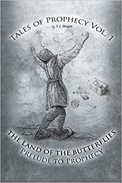
 |
York Sabastin is a forty-six-year-old Cultural Judge who traverses the planets, never staying in any one spot for more than several weeks. The novel finds Sabastin just after he evaluates Torac. In the city of Shiacre, he, like all single men, lives in a simple, almost ascetic one-bedroom dormitory. On the surface, the central character seems to be living a mundane, ritualistic existence, married to his job. However, one of the earliest scenes of the novel quickly shatters this misconception. Unafraid, Sabastin enters the embrace of the sea, battered physically but emotionally and spiritually resurrected by the caress of God. Undergoing an awakening, not unlike that of the main character in Kate Chopin's Awakening, Sabastin becomes a beacon of hope and freedom.
Though the writing is strong, the worldbuilding is what keeps readers engaged. Ironically, in a novel dominated by a male protagonist, the role of women is explored to its fullest from numerous angles. In particular, the energy and liveliness of the scenic Land of the Butterflies are directly juxtaposed with rules that separate girls and boys. At the age of six, boys are directed into the care of a den mother and then later the senior matron—a type of governess who typically is beyond the childbearing age— from age thirteen to twenty-five. For Sabastin, who hardly remembers his own mother, he finds two strong, independent women to guide him: Mandy, his den mother, and Tara Lecyan, the senior matron. Throughout the novel, these figures keep Sabastin grounded, reminding him that even men with great power must remember their mortality or risk becoming consumed in their strength.
Interestingly, as Bergen's novel unfolds, subtle references to scripture become more and more apparent. Even sensual scenes have an aura of spirituality about them. For example, when Tara Lecyan and Sabastin both undress and cleanse their bodies with oil while eating seeds, the scene strongly evokes the purity and innocence of Paradise before the fall and birth of temptation. In this narrative, Jarrock is portrayed as the Son of God, whose sacrifice opened the door to eternal life for the Land of the Butterflies.
The heart of the novel rests on the castle structure. Each castle is represented by a sire whose main objective is to maximize procreation. Though the flag of the sire waves proudly at each castle, they are limited to only being with their castle and children for six years. Sabastin has the unenviable task of convincing both Lakker and Sunora castles to let him be their sire. Though a man of many charms, an Adonis in his own right, Sabastin faces almost certain death at Lakker, a castle that refuses a sire. After murdering four potential sires and injuring many more, Lakker is serious about not being at the mercy of a male. The dichotomy between Lakker's Isa and Sunora's Adele is intriguing and speaks volumes about the ideas of love, compassion, and purpose. What is especially remarkable is Lakker's steadfast refusal to have a sire when in the Land of the Butterflies, the mortality of infants and young children is unusually high. In weak, poorly managed castles, it is common to lose nine out of ten infants. The daughter of God, Koe Sai Sarena, is tasked with bringing back the population of the Land of Butterflies from extinction. Nevertheless, castles refusing a sire are waging war against themselves and facing imminent demise if they are unable to move their bloodline forward.
Through Sabastin's adventure to Sunora and Lakker, Bergen delivers a panoramic portrait of the world she has built. Comparing the Land of the Butterflies, featuring the serenity of Pistol Lake, to Earth, she draws upon the similarities of blue skies, raging rivers, and luscious forests. As part of his responsibilities as a Cultural Judge, Sabastin must evaluate Earth, ultimately deciding whether to destroy civilization on the planet or help the "precious lamb lost in the wilderness" of temptation.
In a book where the majesty of music from Sabastin holds the power to captivate, the concept of getting a license to become a sire and identifying two genetically compatible castles represents love as a transaction. Nevertheless, audiences will be mesmerized by the wholesomeness of Sabastin's character. He is endearing because, despite his positive qualities, he is a flawed man who slips into arrogance, seeing himself as an integral part of both Lakker and Earth's survival. Almost immediately after, however, he has the strength and vulnerability to be introspective and correct course when temptation steers him toward the dark side. With the help of Tara and Mandy, the evolution of Sabastin—his devout faith and divine music—combined with the characters anchoring house Lakker and Sunora, provides a unique glimpse into a world where love and intimacy are mired in quotas that turn gender roles on their head.